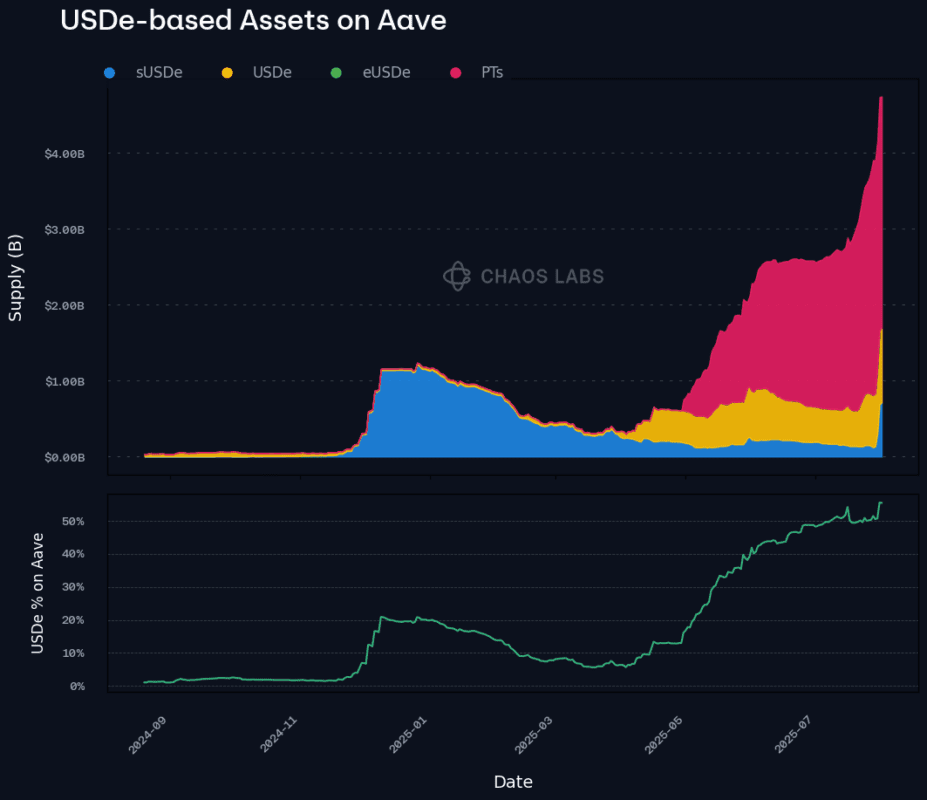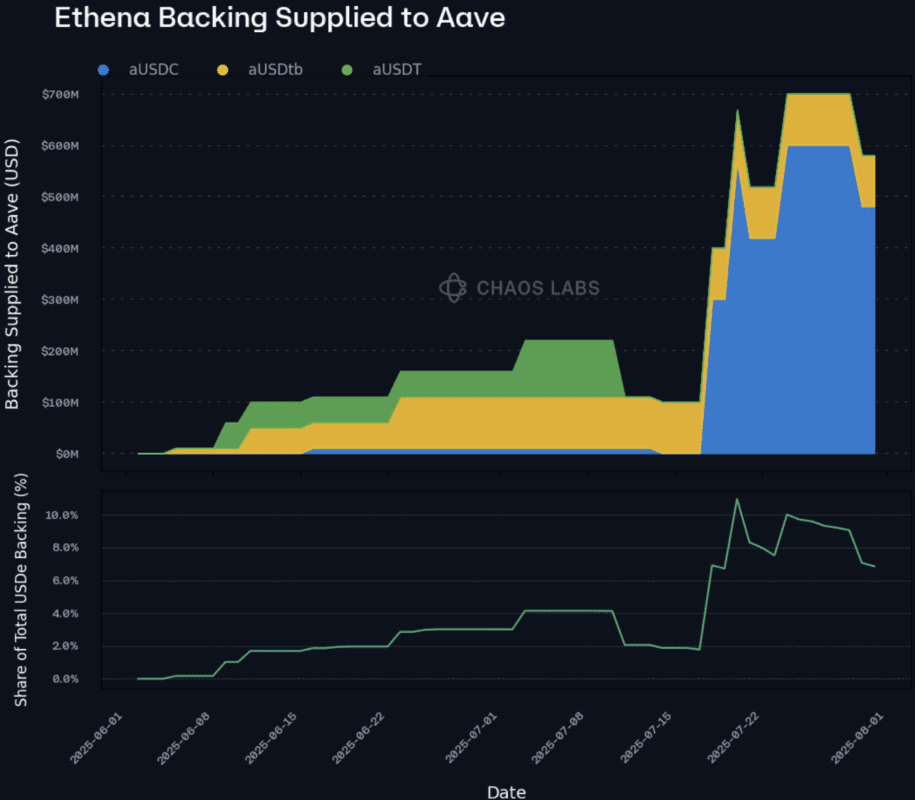
The DeFi project Ethena has issued the dollar stablecoin USDe, which continues to expand in the DeFi market, with a supply exceeding $11.3 billion. The driving force behind this is the 'cyclic leverage trading' constructed by Aave and Pendle. However, as Ethena's related exposure on Aave reaches $6.4 billion, the internal risk team of DeFi's largest lending protocol has also begun to issue warnings.
Cyclic leverage drives explosive growth
Specifically, the core growth mechanism of USDe comes from Pendle–Aave cyclic arbitrage. Users first lock sUSDe yields in Pendle to obtain PT tokens with fixed rates, then go to Aave to use PT tokens as collateral to borrow USDC or USDT, using the funds obtained to buy more USDe/sUSDe, and repeat the above operation to amplify leverage. This operation of stacking returns has made USDe the most explosive product in the DeFi market in just a few months.
 Aave risk team warns of 'reflexivity'
Aave risk team warns of 'reflexivity'
However, this expansion is predicated on sustained high funding rates. Once the market environment reverses, it could trigger massive deleveraging. Aave's risk modeling team, Chaos Labs, pointed out in a recent report that when funding rates decline and USDe yields drop to a level insufficient to cover the borrowing costs of USDC or USDT, cyclic leverage will 'reflexively' deconstruct. This large-scale 'deleveraging' activity will lead to approximately $1.3 billion in leveraged positions being forced to unwind, and USDe will also face a wave of selling pressure.
However, the real concern lies in the fact that Ethena itself has also deposited $580 million in reserves into Aave (including $480 million USDC and $100 million USDtb), creating a 'double risk'.

These funds should serve as a guarantee for USDe redemptions. When investors sell USDe in large quantities and request redemptions, Ethena must withdraw these funds to meet the redemptions. However, since these funds have already been lent out via Aave, borrowers may not be able to repay immediately. If Ethena forcibly withdraws its investment, it will cause Aave's lending rates to soar, forcing borrowers to liquidate, thus triggering greater liquidity pressure.
The team recommends that Ethena set a cap on the reserve ratio invested in Aave and adjust parameters, such as the dynamic borrowing rate slope, to reduce potential chain reactions.
Source



